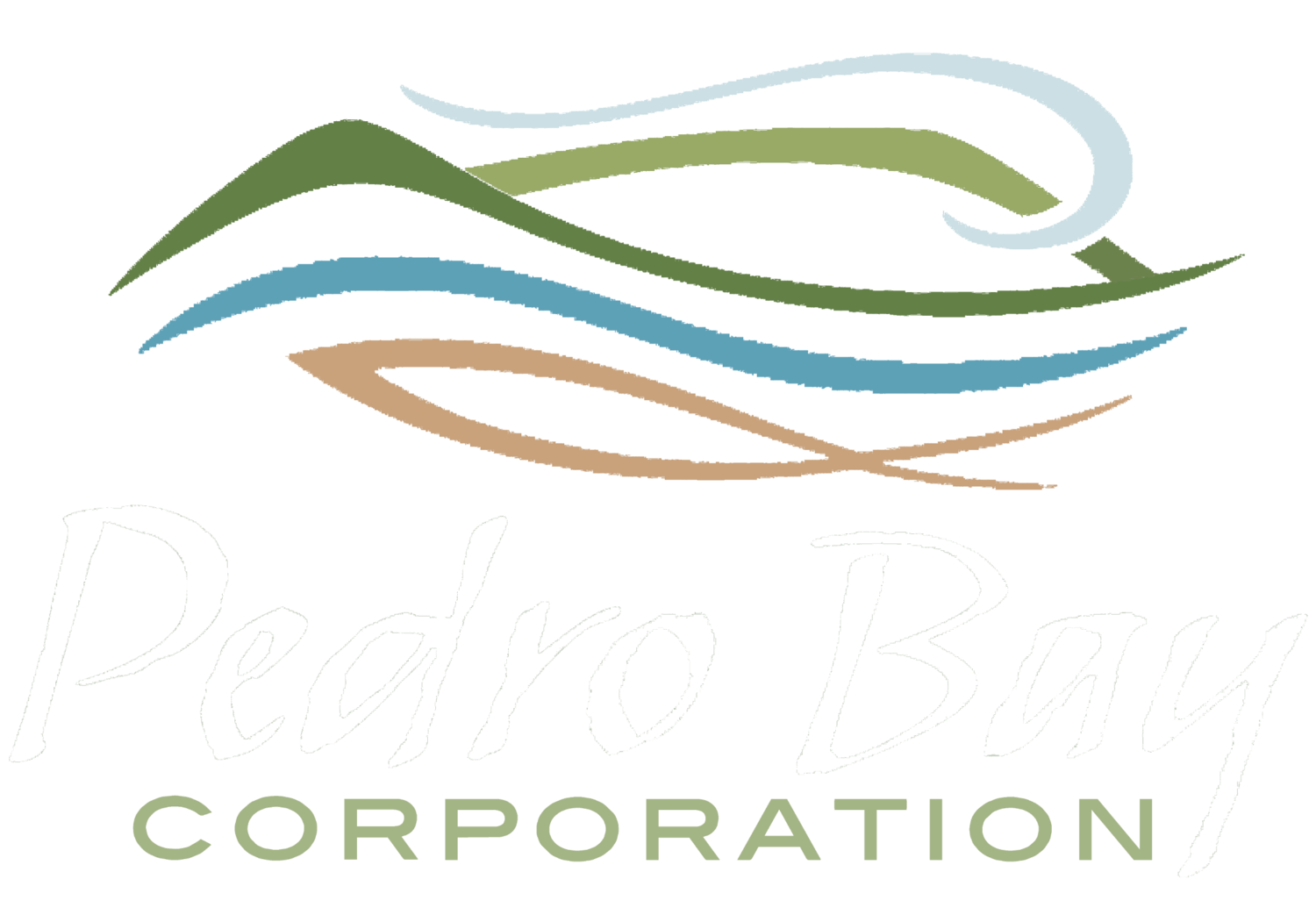ABOUT THE CONSERVATION EASEMENT AGREEMENT:
o The Conservation Fund has agreed to purchase more than 44,000 acres of surface land estate from Pedro Bay Corporation for $18.3 million. The agreement would allow the land to be placed in conservation easements to permanently protect it for subsistence use and other cultural activities. The agreement requires that the purchase be approved by Pedro Bay Shareholders.
o The agreement permanently protects the land for subsistence and other cultural uses by Pedro Bay Shareholders and Descendants. This is an opportunity for our people to see a financial benefit that will provide community benefits and economic value in perpetuity.
o The agreement includes three general areas around Knutson Creek, Iliamna River, and Pile River. The Conservation Fund has agreed to raise the funds necessary to finance the agreement and will provide an additional $500,000 to the non-profit Pedro Bay Benefits Corporation (PBBC) for Shareholder education and cultural benefits as well scientific research.
o The conservation easements cover a portion of the proposed northern transportation route for the proposed Pebble Mine. The terms of the agreement will prohibit Pedro Bay from entering into any land use agreements with the mine project due to the conservation easements’ restrictions on development.
o If approved, the conservation easements will be managed by Bristol Bay Heritage Land Trust (BBHLT). BBHLT will be responsible for administering and enforcing the terms of the conservation easements in perpetuity.
ABOUT THE shareholder vote:
o Pedro Bay Shareholders are voting on the proposal, with all proxies due by May 29. Fifty percent plus one of the voted shares are required for passage. If approved by Shareholders, The Conservation Fund has agreed to close on the agreement by the end of 2022.
o The Pedro Bay Corporation Board of Directors and management recommend that Shareholders approve the proposal in order to permanently protect the land for our Shareholders and Descendants’ subsistence and cultural uses. This is an opportunity for our people to see a financial benefit that will provide community benefits and economic value in perpetuity.
HELPFUL LINKS:
Figure 1 highlights the three proposed conservation easements located in Knutson Creek, Pile River, and Iliamna River encompassing 44,173 acres.
FREQUENTLY ASKED QUESTIONS
HOW WERE THESE PARCELS SELECTED?
These parcels were selected for conservation to preserve subsistence and traditional activities that depend on thriving salmon and wildlife habitats.
WHAT IS A CONSERVATION EASEMENT?
A conservation easement is a voluntary, legal agreement between a landowner and a land trust or government agency that permanently limits certain uses of the land in order to protect its conservation values. Also known as a “conservation restriction” or “conservation agreement,” a conservation easement is one option to protect property for future generations. Under a conservation easement, the landowner retains title to the land and many of the land rights, including the right to use the land under the terms of the conservation easement deed. Here, PBC will retain title to the land and BBHLT will hold the conservation easement. A conservation easement runs with the title to the property regardless of changes in future ownership. Additionally, the conservation easements are “in perpetuity,” which means forever, and should be considered a permanent change to the status of these PBC lands.
In the case of our lands, these parcels remain in their undisturbed, natural state, and continue to serve as an important source of fish, wildlife, and other natural resources for our shareholders. The conservation easements would permanently protect these resources from development.
WHAT ARE THE TERMS OF THE CONSERVATION EASEMENTS?
Pedro Bay commits to preserve the undisturbed natural state of the land and protect it by preventing future development. In exchange, Pedro Bay will receive a one-time payment of $18.3 million plus an additional $500,000 for the Pedro Bay Education and Cultural Fund paid to Pedro Bay Benefits Corporation. Pedro Bay shareholders, descendants, and its invitees will still have access to the land for the same recreational, subsistence, and educational activities they enjoy today.
WILL THESE CONSERVATION EASEMENTS PREVENT THE DEVELOPMENT OF THE PEBBLE MINE?
As mentioned earlier, a portion of the proposed conservation easements covers a portion of Pebble’s proposed northern transportation route. The terms of these conservation easements will prevent PBC from entering into any voluntary agreement that would permit the Pebble northern transportation route or any other development.
ARE WE SELLING THIS LAND?
No. PBC will continue to own this land, and it will be protected. However, there will be restrictions preventing future development. Though PBC will remain the landowner, TCF is purchasing the rights to prevent future development.
WHAT WILL BE ALLOWED AND PROHIBITED ON THE LAND?
Conservation easements protect certain conservation values that are defined in each easement’s terms. Under the conservation easement agreements, shareholders and descendants will be able to continue to enjoy practicing traditional activities and using the land largely the same ways that they have for generations.
The primary purpose of the conservation easements is to preserve and forever protect the natural and scenic features, ecological resources, open space, significant habitat for salmon, bear, moose, and other fish and wildlife, and to prevent uses that would have individual or cumulative adverse effects on the lands. The intended purpose of the lands is to provide for traditional uses by Pedro Bay’s shareholders and descendants, including subsistence hunting, fishing, and gathering. The Conservation Easement ensures that in the event that the lands are degraded or destroyed, they will be enhanced and restored to their natural condition.
If approved, the lands covered by the Conservation Easement may not be used for any other purpose or development other than those provided for in the Conservation Easement.


